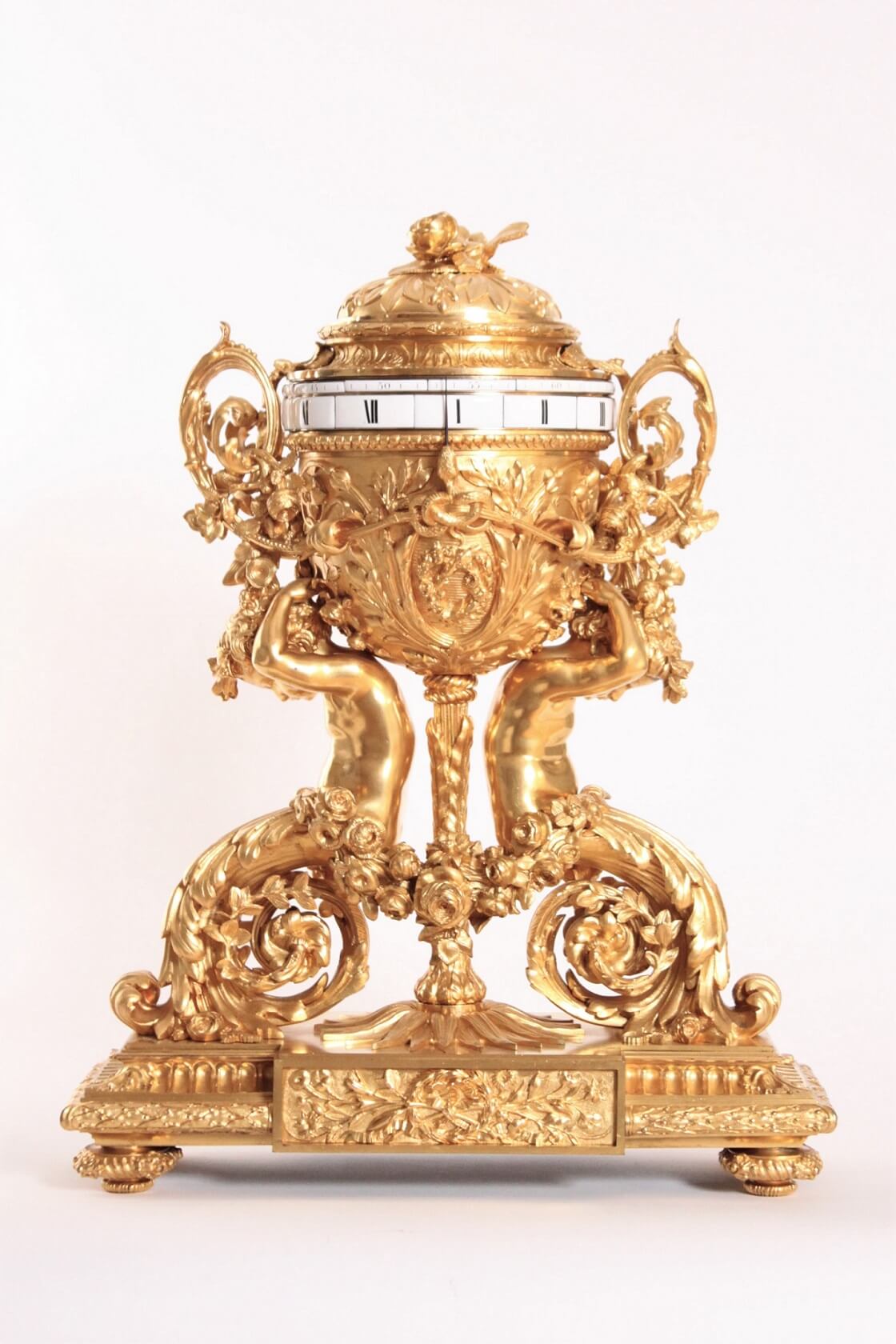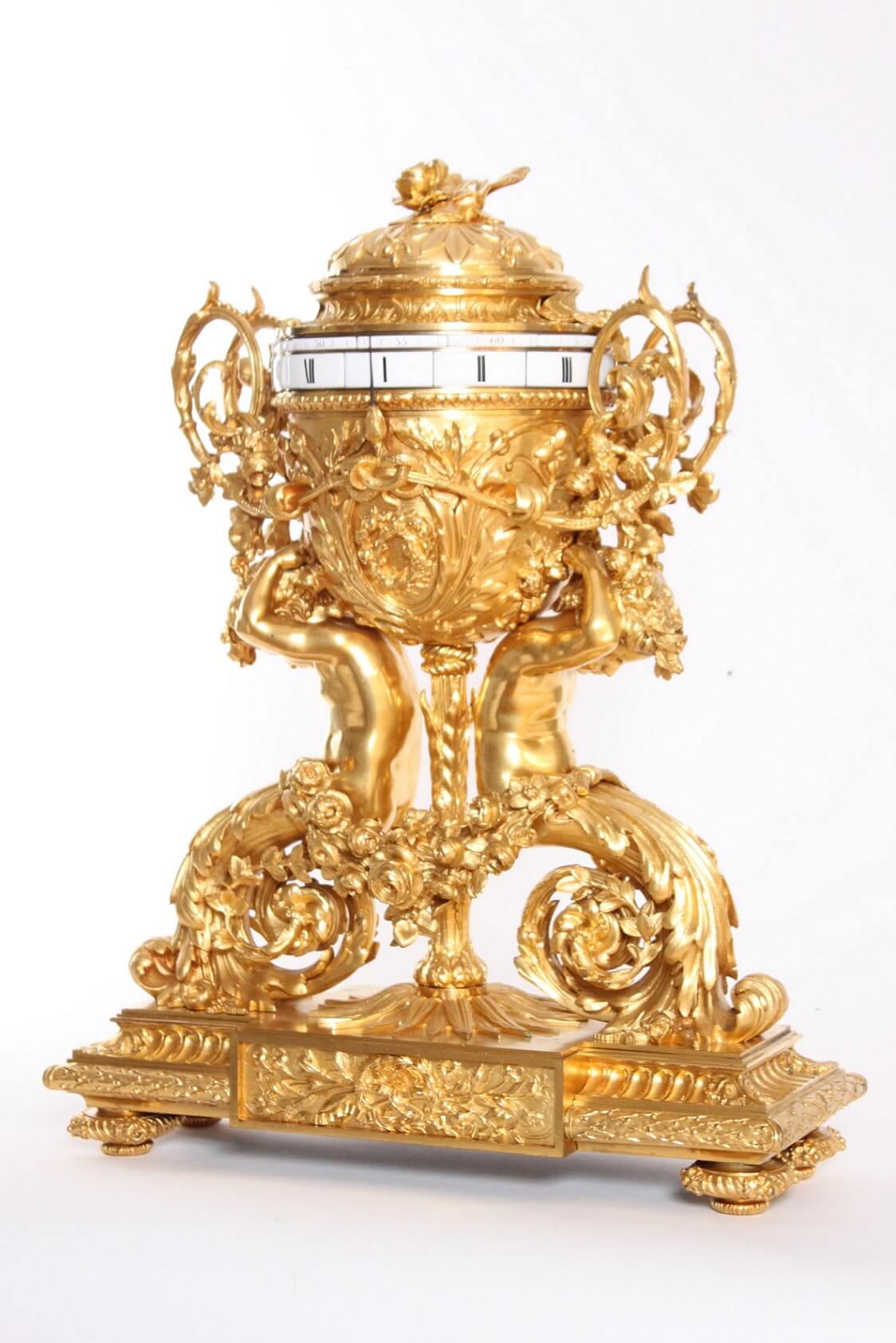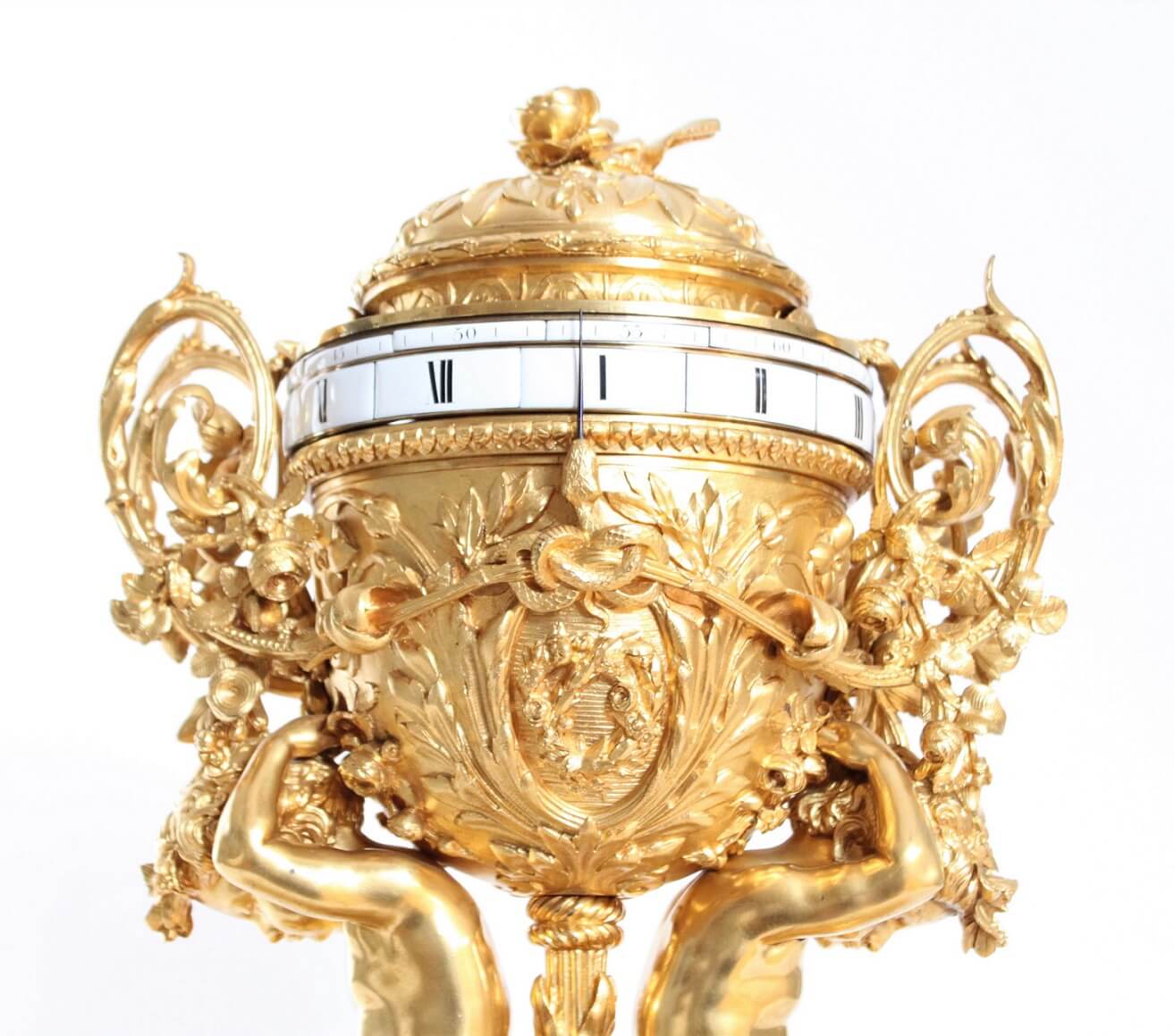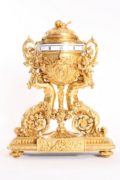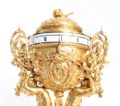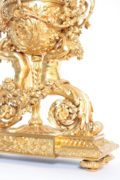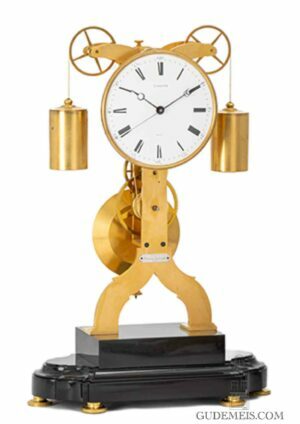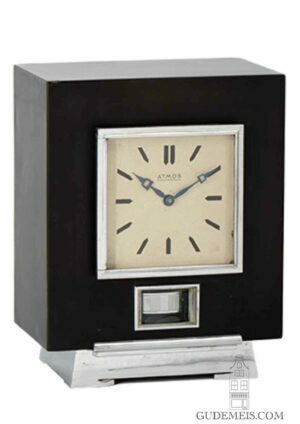A large French gilt bronze sculptural cercles tournants mantel clock, circa 1870
Description
The movement
The movement is driven by two spring barrels and has a duration of eight days. It is being regulated by anchor escapement in combination with a pendulum. The movement strikes the hours on a bell and once for the half hours by means of a countwheel.
The annular dials
The movement drives two annular dials with enamel cartouches along a fixed blued steel hand. The ring for the minutes has Arabic numerals and the ring for the hours has Roman numerals.
The gilt bronze case
The annular dials turn in a very well cast and chiselled gilt bronze urn shaped case with scroll handles to the sides. The urn has a lid surmounted by leaves and a rose. The urn is supported by two herms whose abdomen terminate in beautiful scrolling leaves and who are connected by a heavy garland. These herms flank a vertical column rising from a flower. The rectangular break front base has a flower relief panel and a wreath. The sides are adourned with heavy acanthus mouldings. The whole is raised on four rounded feet. The casting and finishing of the bronze is of a very high quality.
Jean-François Forty
The design of this fine mantel clock is based on an engraving by Jean-François Forty (worked between 1775 and 1790) from about 1785. This execution can be attributed to Guillaume Denière (1815-1901) who had a very large workshop in Paris renown for its great quality. (lit. Ottomeyer & Pröschel, Vergoldete Bronzen deel I, pp. 427)
